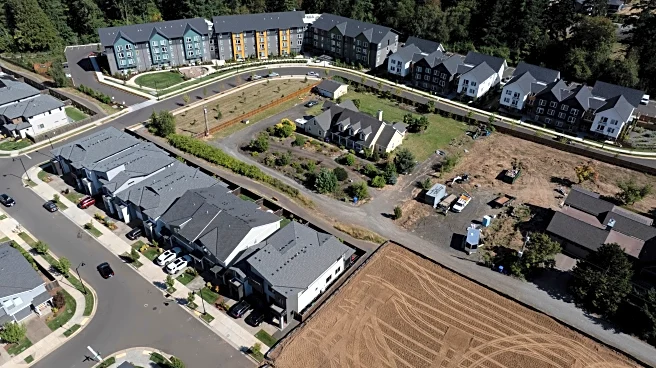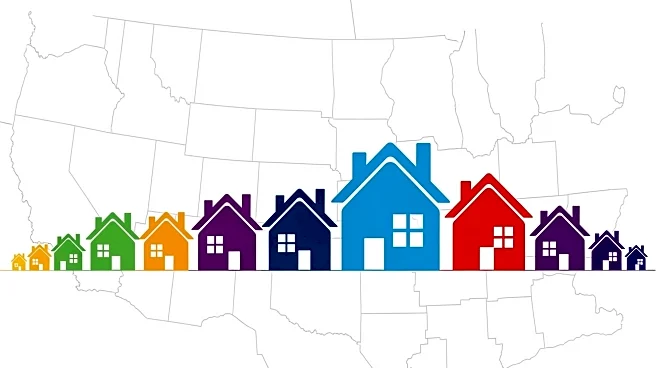What's Happening?
The National Association of Realtors reports a 1.5% increase in sales of previously owned homes in September compared to August, reaching an annualized rate of 4.06 million units. This marks the highest
pace in seven months, although slightly below analyst expectations. Sales were 4.1% higher than the previous year, with regional variations showing the strongest annual growth in the South and Northeast. The decline in mortgage rates, from 6.67% in July to 6.17% in September, has contributed to improved housing affordability and increased sales.
Why It's Important?
The rise in home sales indicates a positive response to lower mortgage rates, which enhance housing affordability. This trend is crucial for the real estate market, as it suggests potential stabilization despite persistently high home prices. The increase in inventory, up 14% from last year, provides more options for buyers, although the supply remains historically lean. The real estate sector's performance is a key economic indicator, influencing consumer confidence and spending, and impacting related industries such as construction and home improvement.
What's Next?
Continued monitoring of mortgage rates and their impact on home sales will be essential. If rates remain low, further increases in sales could occur, potentially leading to price adjustments. Stakeholders, including real estate agents, buyers, and policymakers, will need to address the challenges of high prices and limited inventory. Future policy decisions may focus on promoting affordable housing and increasing supply to balance the market.
Beyond the Headlines
The dynamics of the housing market reflect broader economic conditions, including interest rate policies and consumer behavior. The interplay between affordability and inventory highlights the need for sustainable housing solutions. Long-term shifts may involve increased investment in affordable housing projects and innovative financing options to support diverse buyer needs.













